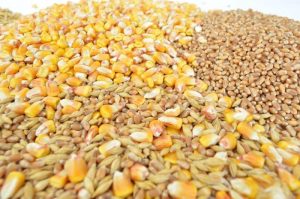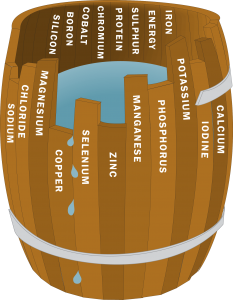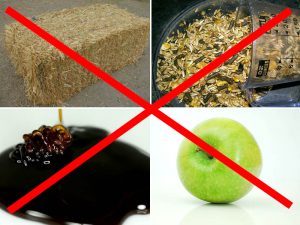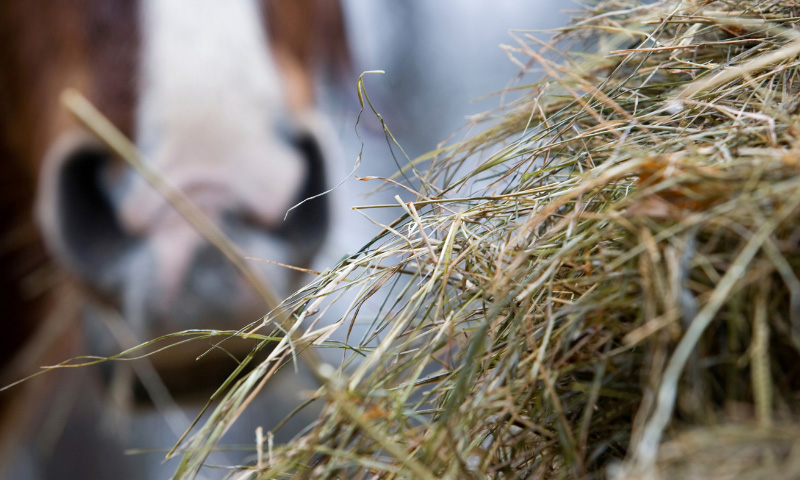Feeding horses that suffer from laminitis is an issue faced by increasing numbers of horse owners all over Australia. There are so many conflicting “do’s and don’ts” out there that it can give you a major headache just thinking about it! Having said this, here is what I know based on information that I have gathered from discussing the topic with Equine Nutritionists, Vets, Farriers and Horse Owners. Please keep in mind that Equine Nutrition is an evolving science and as more research is done and more scientific evidence is gathered things could change in the future.
Prevention is always better than treatment, so it is important to feed horses that have suffered or at risk of suffering from laminitis, a diet that is low in non-structural carbohydrate (NSCs are the starch plus the water-soluble carbohydrates or sugar). Managing weight is also just as important as feeding a low non-structural carbohydrate diet. Horses and ponies that are prone to laminitis are often very fat so it is important to carefully manage pasture turnout and feed intake.
Feeding equines prone to laminitis should be centred around three basic concepts:
 1. Forage that has low NSC (<12% starch and sugars) content should make up most of the diet.
1. Forage that has low NSC (<12% starch and sugars) content should make up most of the diet.
 2. Never feed grain, grain by-products, fruit or molasses.
2. Never feed grain, grain by-products, fruit or molasses.
 3. Make sure the diet is balanced – additional protein, vitamins and minerals may be required.
3. Make sure the diet is balanced – additional protein, vitamins and minerals may be required.
The following points summarize the current advice regarding strategies for managing horses and ponies that are prone to laminitis:
- Feed hays that are typically low in sugars (mature or stemmy tropical grass hay (e.g. Rhodes and Teff) and mature or stemmy Lucerne hay). If you are concerned about sugar levels in hay, soak the hay in warm water for 30 minutes before tipping all of the water out, rinsing and feeding. Avoid any hays that are known to have high levels of sugar such as wheaten, barley, oaten and ryegrass.
- Restrict grazing on pasture to the very early hours of the morning when sugar levels in the pasture are at their lowest. Horse’s should be removed from the pasture by 2 hours after sunrise. A grazing muzzle can be helpful to reduce pasture intake if it is impossible to control grazing times.
- If your horse has very recently suffered a bout of laminitis and is still sore it is best to avoid grazing completely until the animal is once again sound.
- If extra calories are required to what low non-structural carbohydrate forage can provide, then be careful to select low NSC, grain free feeds or ingredients.
Never feed the following ingredients:
- Wheat, oats, corn, barley or rice (even if steam flaked, micronized or extruded).
- Bran (rice or wheat), millrun, mill mix, pollard, middlings or other cereal by-products.
- Molasses and honey.
- Treats such as apples, carrots and licorice.
The overall diet should contain no more than 12% (10% is best) non-structural carbohydrate. A balanced diet is crucial. The addition of good quality protein that contains good levels of lysine and methionine for aiding hoof tissue repair and meeting vitamin and mineral requirements is of extreme importance.

The addition of a supplement specially designed for hoof health that contains biotin, zinc, methionine, lysine as well as broad spectrum minerals will help give your horse the building blocks it needs to repair damaged hoof tissue.
At a bare minimum a horse requires 1.5% of its own body weight as roughage in a day. Keep in mind that horses should never be put on a ‘starvation diet’ as severely limiting essential nutrients is one of the worst things you could do. A laminitic horse still requires energy for maintenance and will need essential amino acids, minerals and vitamins to assist in repairing the damage to the hoof. Refer to a previous article No hoof, no horse for information on the important hoof helping nutrients.
This concludes the five-part blog series on laminitis. If you haven’t read the previous articles they are all listed here:
1. Laminitis and Founder In Horses
2. What Are The Most Common Signs Of Laminitis
3. What Causes Laminitis
4. What Should I Do If My Horse Has Laminitis.
For further information please contact our office on 1800 81 57 57.
Written by Shannon Godwin, BAppSc GDTL.
